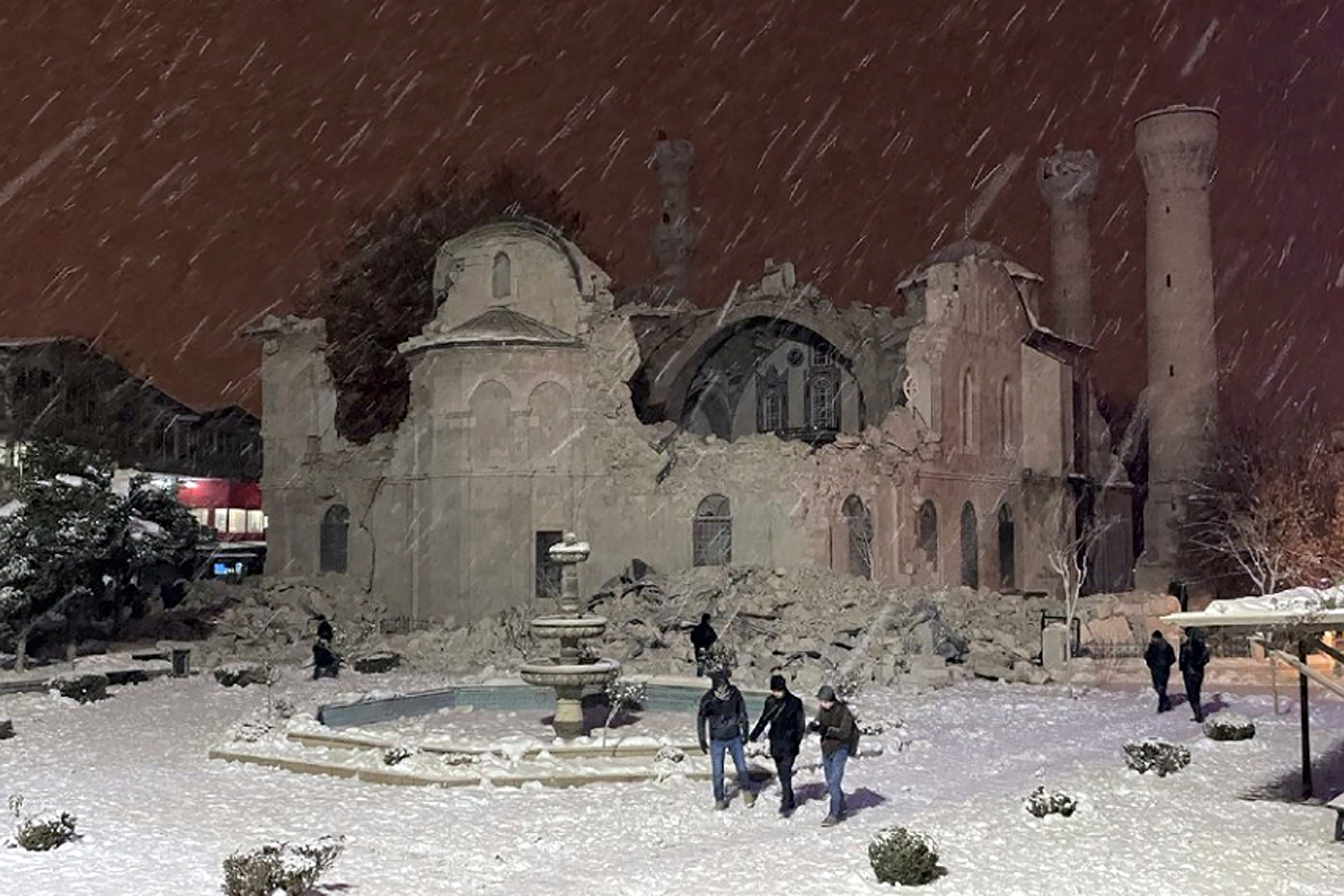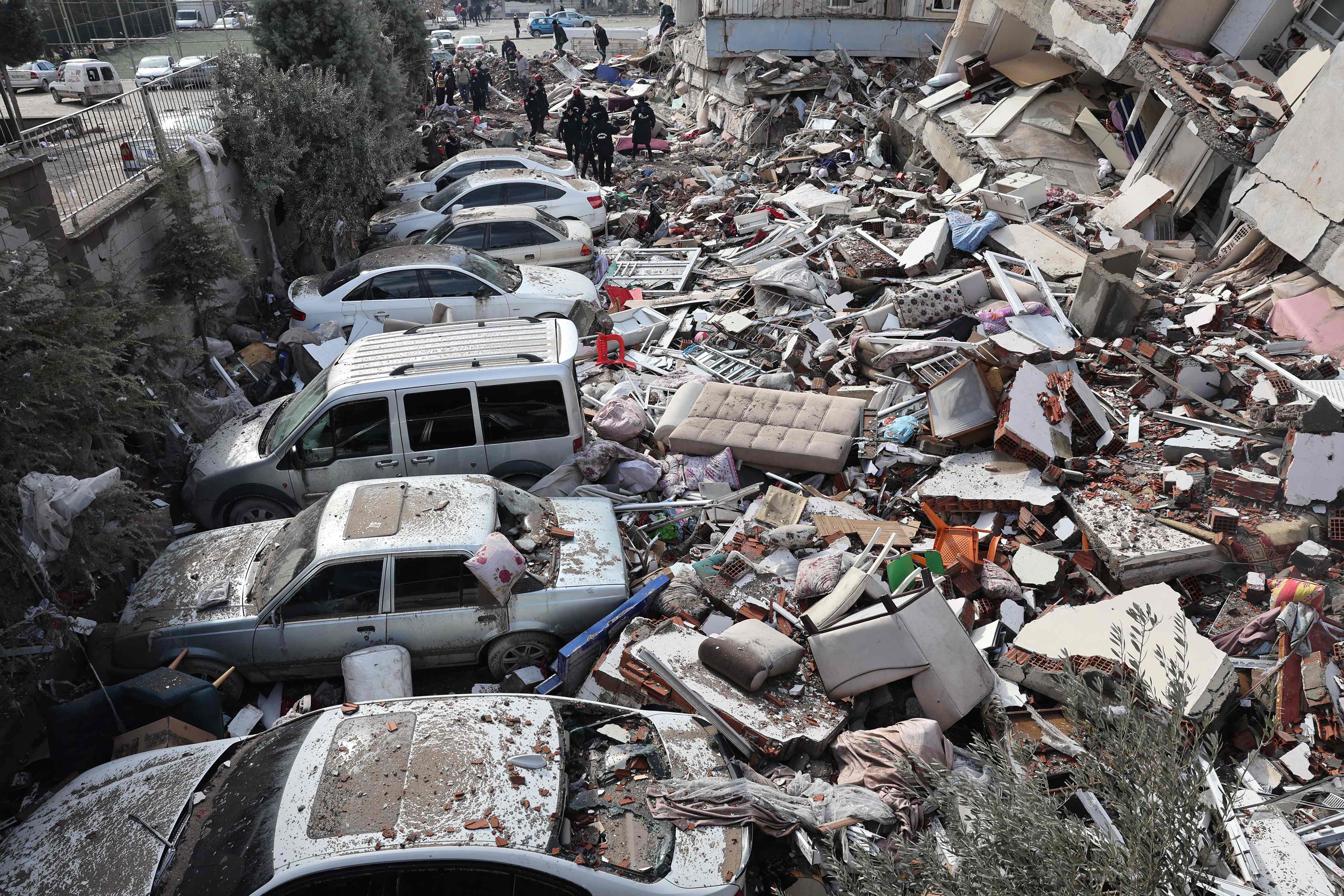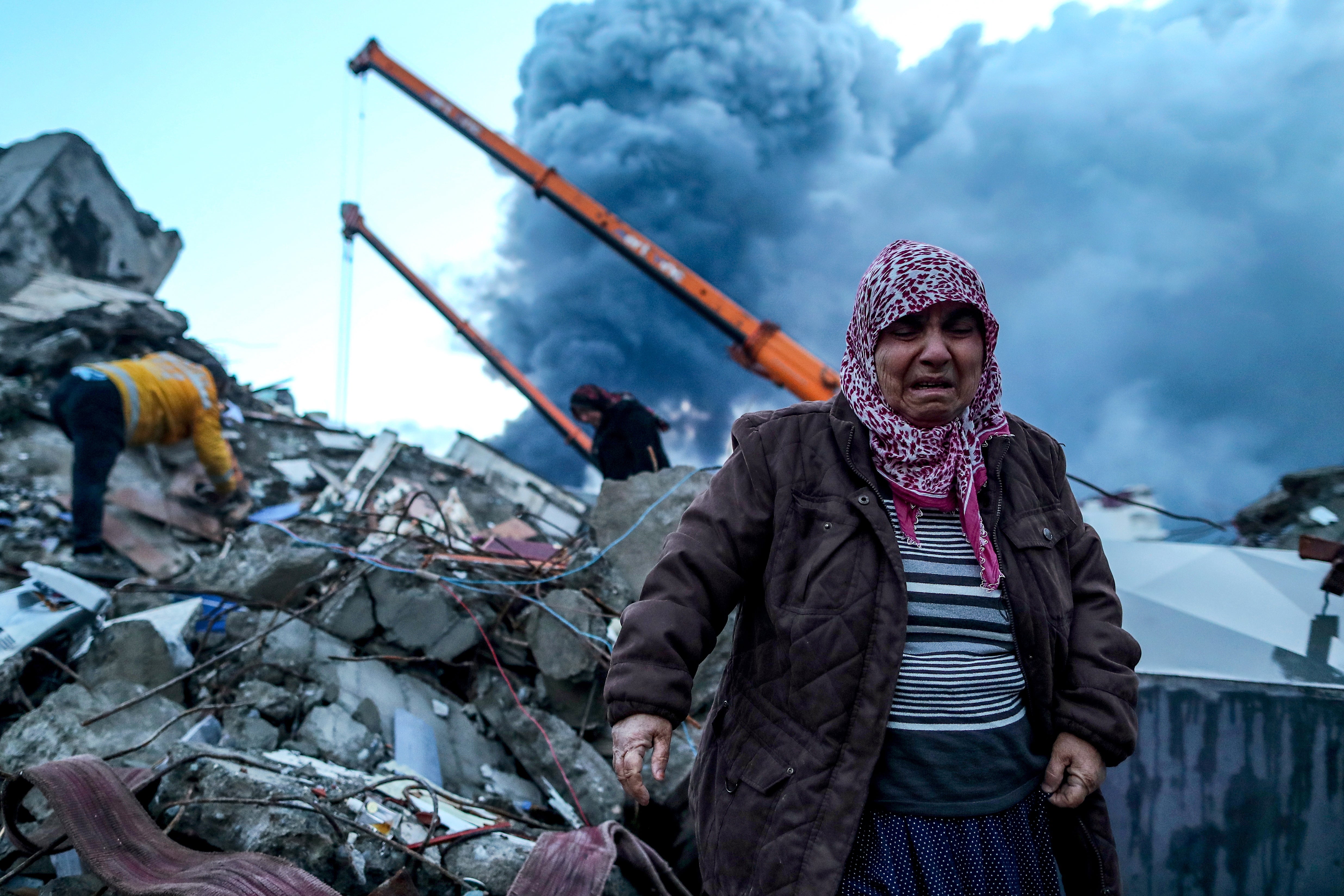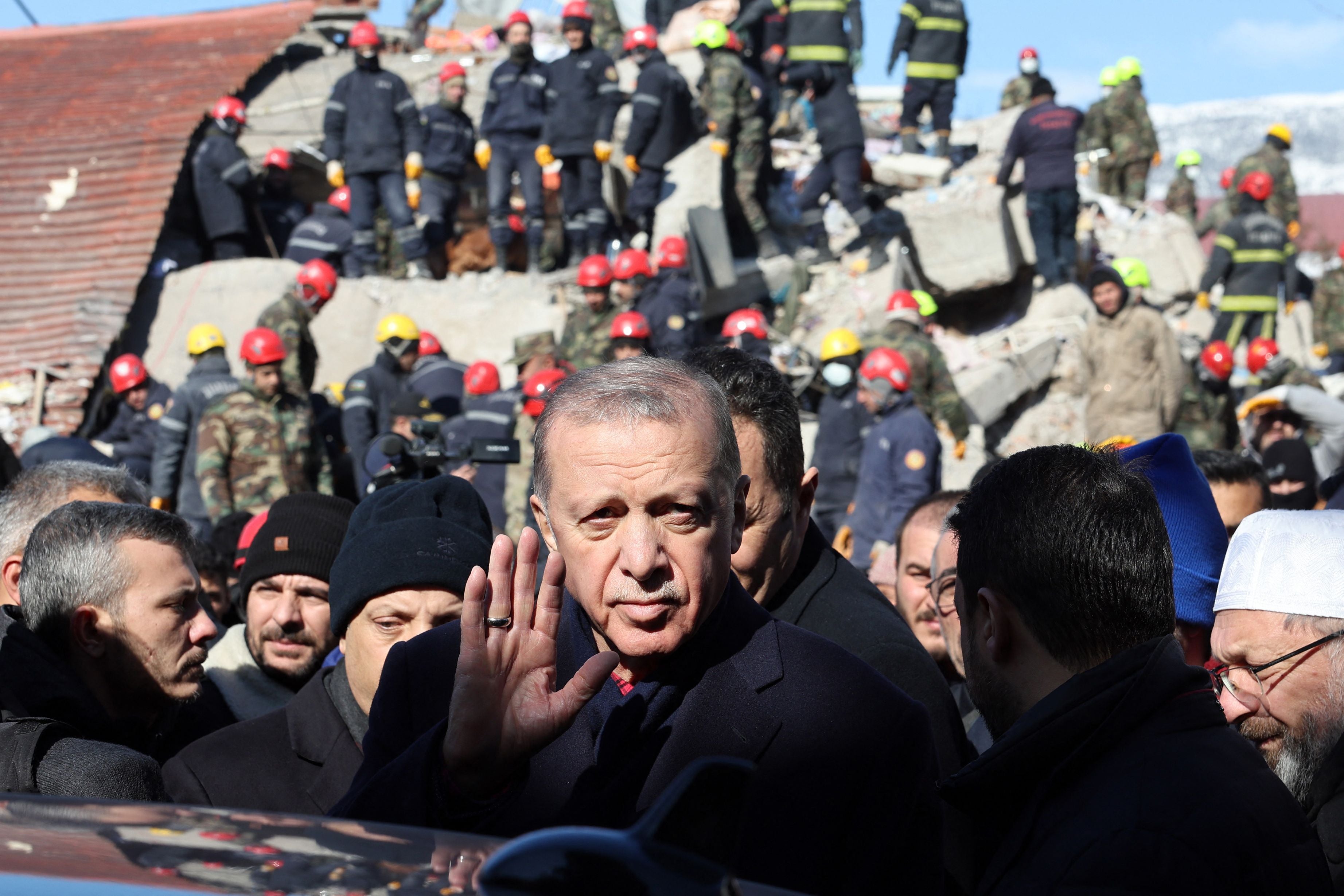Twitter exalted him as ‘predicting’ the Turkey earthquake – here’s what the experts say
Monday’s devastating tremor shocked the world
Your support helps us to tell the story
From reproductive rights to climate change to Big Tech, The Independent is on the ground when the story is developing. Whether it's investigating the financials of Elon Musk's pro-Trump PAC or producing our latest documentary, 'The A Word', which shines a light on the American women fighting for reproductive rights, we know how important it is to parse out the facts from the messaging.
At such a critical moment in US history, we need reporters on the ground. Your donation allows us to keep sending journalists to speak to both sides of the story.
The Independent is trusted by Americans across the entire political spectrum. And unlike many other quality news outlets, we choose not to lock Americans out of our reporting and analysis with paywalls. We believe quality journalism should be available to everyone, paid for by those who can afford it.
Your support makes all the difference.Two days before the deadliest earthquake to rock the globe in more than a decade, an ‘expert’ warned that a 7.5 magnitude earthquake would hit the very area it eventually struck.
In the early hours of Monday morning, Turkey and Syria were decimated by a 7.8-magnitude quake. The tremor reduced hundreds of miles of infrastructure to rubble, from underneath which almost 16,000 had been pulled by Thursday morning.

The world watched on in horror as rescuers, battling freezing temperatures and blackouts, picked through the mounting debris for ever-waning signs of life.
As increasingly frightful stories emerged from the rubble, a tweet posted by Frank Hoogerbeets, in which he warned of an imminent and dramatic seismic event, went viral.
On 2 February, Mr Hoogerbeets told his followers that “sooner or later” a huge quake would hit southern and central Turkey, Jordan, Syria, and Lebanon.
Social media was quick to exalt the Dutch man as “predicting” the earthquake – but experts are unequivocal in their assessment: “While at first sight this sounds like a perfect prediction, ‘sooner or later’ is NOT a prediction.”
In a Twitter thread, Boris Behncke, volcanologist at INGV-Osservatorio Etneo, dismissed Mr Hoogerbeet’s predictions, saying it was “common knowledge that major earthquakes will occur sooner or later in areas where there have been major earthquakes before.
“It’s like saying that after the rain there will be sunshine, sooner or later.”
Mark Allen, head of the department of earth sciences at Durham University, also told The Independent there was “no predictive power” in Mr Hoogerbeets’ statement.
“It is a coincidence that FH’s tweet was made so soon before the major earthquake. If the main event happened 1 year, 10 years or 100 years after his tweet, it would still count under ‘sooner or later’,” he explained.
Mr Allen also noted that the Mr Hoogerbeets made “no specific prediction about the location of the main earthquake”, who instead named four countries stretching hundreds of miles.
“We know this area is strongly affected by earthquakes. His tweet is a forecast, which an undergraduate tectonics class could have made. It is not a meaningful prediction. It just happens that he made his tweet so soon before the event took place,” he said.

On the day of the deadly tremor, Mr Hoogerbeets followed up his initial “prediction” with a Facebook message, offering a broad summary of how he seemingly prophesied the tragedy.
“My heart goes out to all those affected by the major earthquake in central Turkey. As I stated earlier, sooner or later this will happen in this region, just like in 115 and 526. These earthquakes are always preceded by critical planetary geometry, as we had on February 4-5,” he said.
According to his website, Mr Hoogerbeets works up his seismic forecasts using the Solar System Geometry Index (SSGI) – a method he developed using “the computation of a dataset based on values given to specific geometric positions of the planets, the moon and the sun within a specific time-frame.”
He said that after “several years of observation and research, it became clear that some planetary and lunar geometry in the Solar System clearly tends to cause a seismic increase, while other geometry does not.”

From this Mr Hoogerbeets says he developed an algorithm, which he now uses to “predict” earthquakes across the globe.
Mr Hoogerbeets acknowledged “much resistance within the scientific community regarding the influence of the planets and the moon” on seismic activity on Earth. Though he pegged this as “an assumption” – a statement backed up by sharing an image of a 1959 letter to the editor in Nature magazine.
Mr Allen shared his own misgivings, telling this news site: “I have not seen a valid demonstration of a meaningful connection, and do see how the planetary alignments would effect specific regions.
“This is not to say that the Moon cannot have an effect,” he added, explaining that there is some evidence of a statistically valid connection between tidal stress and earthquake timing.

“But, remember that the tides operate on a daily basis. Such tidal stresses might tip faults ‘over the edge” into an earthquake, but they don’t cause the faults to be active and earthquake-prone in the first place,” Mr Allen said.
He did not dismiss prediction as being without value, however – as long as it’s “based on robust arguments that might have merit.” Instead, he stressed “investment in mitigation as the way forward.”
There is consensus among experts that preparation, planning, and prevention, such as developing adequate building codes in earthquake-prone areas, is most worthy of focus in terms of saving lives.
In that vein, Mr Behncke urged his followers not to “consider ‘warnings’ that sound like a comfortable solution to a problem as old as humanity, but which are not of any practical use for the people, administrations, and Civil Defense.
“Earthquakes are far more complex than most can imagine in their wildest dreams.”
The Independent has approached Mr Hoogerbeets for comment.






Join our commenting forum
Join thought-provoking conversations, follow other Independent readers and see their replies
Comments